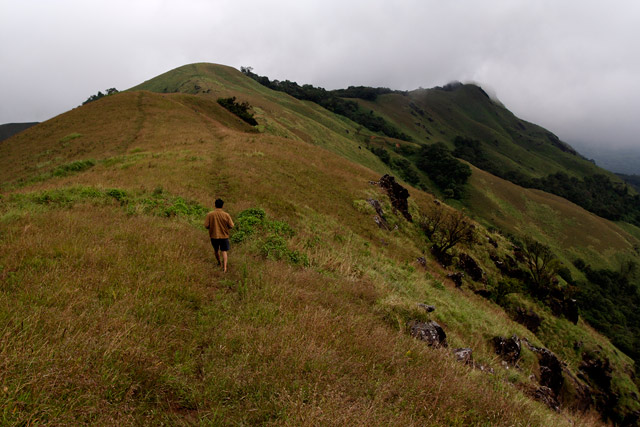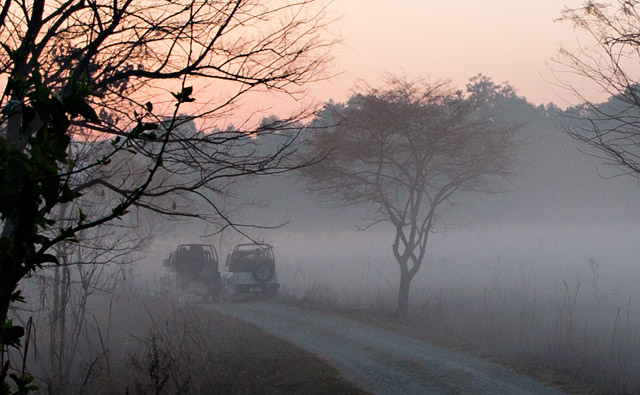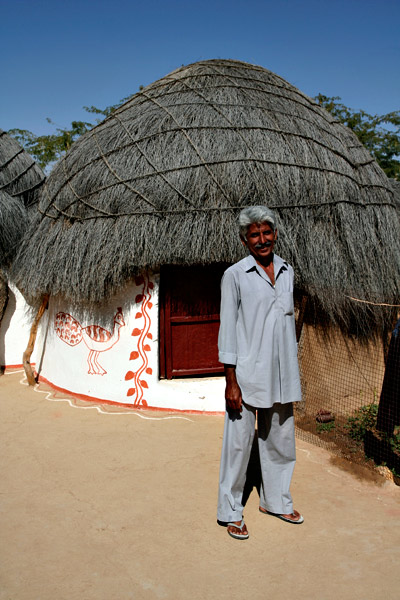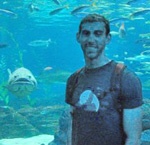Why Travel on Budget?
Here is my views and reasons on travelling on a budget. The post is dedicated to one strong proponent and practitioner of budget travel I know of – Priaynk of priyank.com
In the last decade or so, I have spent considerable time travelling and exploring all corners of India. As the cliche goes, I have journeyed to Kashmir and to Kanyakumari, to the eastern corners of North-East India and to western edges of Rajasthan and Gujarat. If I sit and count, I can probably mark more than 500 days in the calendar as days spent travelling in the last ten years. That’s probably way above average, although it could be way below the frequency at which some people I know travel.

Questions always come up when I talk about my travel and profession. People are often surprised, envious and often wish to be in my shoes. I think the question, ‘how to afford it,’ always pops up, thought it rarely gets asked to me directly. In fact there are two expensive things that need to be burned to be able get on the road frequently – time and money. These are two things short in supply for most people in this world, including me. Affording time is something that has remained a puzzle for me as well. So I ended up quitting a desk job to travel around the country and then never went back. That’s how I afforded time. But money, I think, a lot of people reading this can afford. Provided it is spent wisely.
The answer is in budget travel. If there is one simple and important reason that makes budget travel worth the effort, it allows you to stretch your journey. It is possible to travel for five to ten days on the same money that you would burn splurging on a holiday for just one day. So if you could afford a ten day holiday in comfort every year, you could stretch it from fifty to hundred days when you travel budget. This alone is sufficient reason for me to travel budget. But there are more benefits.
Stretching my journey
To reiterate, this is the single most important reason why I travel on budget. If I could afford to travel fifteen days a year in comfort, budget travel will probably allow me to be out for two months. But what if I could afford to travel two months a year in comfort? I would still travel budget, so that I can stretch it to 8 months. But what if I could afford to travel 365 days a year in comfort? I will answer the question when such a day comes. I haven’t yet thought about it.

In 2006, I took a six month sabbatical from work and spent two months of it travelling in North and North-East India. Of this, a month was spent visiting Auli, Rishikesh, Corbett, Varanasi and Agra. Because I travelled budget, I could afford to take my time indulging in the experiences of each place. I spent a week skiing in Auli, another week on the bank of Ganga at Rishikesh, four days each at Corbett and Varanasi besides a brief two days in Agra. If I were to travel in comfort, I would have exhausted all of that money during the week I spent skiing in Auli.
It doesn’t necessarily mean I would actually want to be travelling for 8 months or 365 days a year. After some travel, I would always like to come back home and stretch my legs. But there is another reason why it is worth travelling budget. Read on.
I prefer to spend on the experiences, not accommodation
Does this mean I count my money every single time before I give it to someone? Not necessarily. If there is an experience that requires me to pay and doesn’t offer me a budget option, I would rather pay for it than deprive me of the experience.
While I was in Corbett, I had to hire a vehicle for four full days all by myself. Hiring a vehicle all for myself is hardly a budget travel thing. But there weren’t any alternatives. I was travelling there solo. I did not want to share a vehicle with strangers because I wasn’t interested in having to listen to the desires of someone who would be desperately after tigers. I wanted to live the experience of seeing Corbett the way I liked to see it. The only option was to hire a vehicle all for myself. I went for it.

To me, budget travel is not about cutting down on things one can do and fiercely stick to a daily budget. It is about eliminating frills that are not necessarily a part of my travel experience. For example, a spotlessly clean room is what I look for when I travel, instead of accommodation that costs a lot and comes with cushy mattress, wooden flooring and a lot of furniture that I may never use during my stay. If there is public transport available that can take me to a destination in reasonable amount of time, I would rather take it than spend on a taxi. At the same time, I would not mind spending more if there is no public transport available or when the budget accommodation at a location turns out to be grimy and unfit to stay.
Some experiences are possible only with budget travel
It is amazing how much difference does taking public transport and walking do to your travel. You meet people whom you are unlikely to meet if you are moving from place A to place B in a car or necessarily stay in comfortable hotels.
During my first visit to Jaisalmer, I stayed at a small guest house run by Badal Singh. It was a simple, spartan place that was as basic as it could. But talking to Badal and his attitude to life was like a revelation. In the many conversations that we had during the two days I was there, there was much to learn about living a life of fulfillment. Badal was not just a hospitable guest house owner, he was a highly spiritual person whose good vibes would get attached to his guests as well. If you haven’t already done that, do click on the link on his name and read my experience staying with Badal.

The good time I had with Badal continued with his associates. Badal sent me into the desert on an overnight camping trip, which turned out to be a rare and beautiful experience. I went into the desert on a camel, assisted by camel driver Ratan who knew the geography of the region well. We did not carry camping equipment, tents, chairs or a paraphernalia of things that would go into the back of a pickup truck. Instead, all we had was small bag of groceries and a couple of quilts over which I sat on the camel back. That night, Ratan cooked a local delicacy – Bhati – on fire. I ate and slept in the open desert–no tent or whatsoever–watching the stars and listening to the sound of bell from the camel’s neck in the otherwise silent desert. It is an experience that a comfortable hotel will never offer to its guests.
I have noticed in many occasions that it is easy to connect with local people when you are travelling on budget. There are many occasions where I have chosen a basic homestay against a more expensive hotel, which enabled me to listen to stories with the host over dinner. I once ended up playing cricket with a bunch of boys simply because I was walking past (instead of driving past) and they invited me to join them. It is not that such experiences can never be had if you are travelling with a good budget; but the chances of mixing are much likely when you are travelling simple.
Mixing with other travellers
It is also more likely that you connect with other travellers easily when you are travelling budget and staying at simple places. It is perhaps because of the smaller spaces where people get together (say, lunch table or a courtyard), or simply a way of acknowledging a fellow traveller who is on a budget – I have seen that I am far more likely to strike a conversation (and discover interesting things in the process) with fellow travellers in smaller places. I have met volunteering workers on the ghats of Varanasi, photographers who wandered in the ancient temples in Belur, rickshaw drivers in Rajasthan, fellow travellers in Uttarakhand and many more such people on the road who have remained in touch. For reasons I am not sure, I don’t think these would have happened, had I been travelling in comfort.
At a personal level, this is probably not a reason that is compelling enough for me to opt for travelling in a budget. I am not a ‘let me go and meet a lot of people’ kind of person either. But this counts, along with other experiences.
I am happy to sweat it out
I simply enjoy carrying a heavy backpack with me (for some distance at least!), going on long walks and hiking in the mountains (and even in towns and cities where there is something of interest), taking the harder way like using public transport instead of a private car. For no specific reason, I like doing it this way and feel good about it. It is simply a way of travel that makes me happy at the end of it, whether or not I accomplish something from the journey.
Of course, there are negatives too about travelling on a budget. For example, because I did not have a car or a pre-booked itinerary during my visit to Agra, I was hounded by touts everywhere I went. There are times when I had to spend nights in not-so-desirable places simply because I opted to stay at a place very remote or decided to arrive without a booking. Some times it pays to have a private vehicle, which enables you to go as you please and stop where you wish. There are times when I have wasted a day on the road because I could not find a connecting public transport in time. Some such surprises are eliminated if you travel in comfort. But then, on many occasions, it is surprises that really make a journey fulfilling.
So, am I against travelling in comfort? There are some confessions to make here. There was a time when I used to think that the only correct way to travel is to travel down-to-earth. I was a snob who thought of myself standing on a high ground and looking down at all those people who waste money on ‘frills’. But no longer. I guess to each one is their own way of travel. Someone who is looking for a stress-relieving holiday is probably better off in a hotel with a spa and occasional visit to the beach-front. It is probably worthwhile sticking to a planned itinerary and using comfortable hotels if you are travelling with family (kids, elders, etc) or in a large group of people with diverse interests. Or simply, it could just be your preference and there need not be any reasons to opt to travel in comfort or in a budget.
 I received an email from Jason a few weeks ago introducing me to his plans of selling travel itineraries online. The interesting part of his business plan was to let any writer post an itinerary on the site. The itineraries will be made available for sale on the
I received an email from Jason a few weeks ago introducing me to his plans of selling travel itineraries online. The interesting part of his business plan was to let any writer post an itinerary on the site. The itineraries will be made available for sale on the